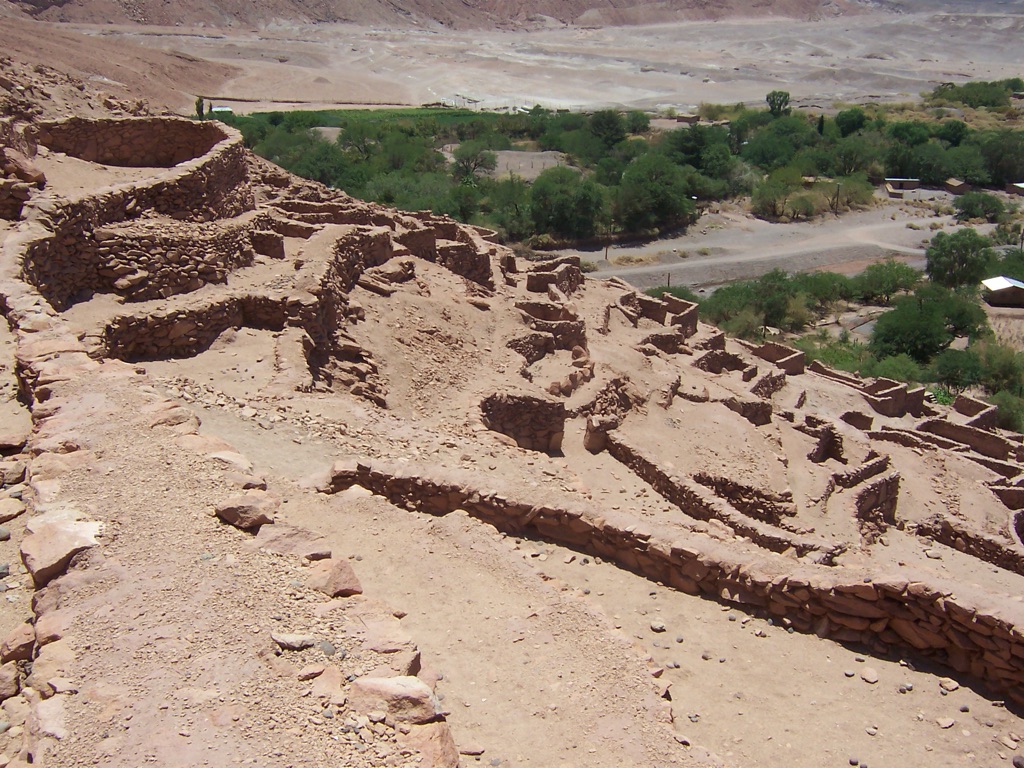The Pukara de Quitor is an ancient pre-Columbian fortress, located near San Pedro de Atacama, in the Antofagasta Region of Chile. It stands as a testament to the strategic ingenuity of the Atacameño people, who built it in the 12th century. This stone fortress served as a defensive stronghold for the local communities against invading forces. It witnessed significant historical events, including battles during the Spanish conquest. Today, it is recognized as a national monument and an important archaeological site, offering insights into the region’s indigenous history and culture.
Atacama people

The Atacama people, also known as the Atacameños, are an indigenous group primarily residing in the Atacama Desert, one of the driest places on Earth, located in northern Chile and parts of Argentina and Bolivia. This region, characterized by its stark landscapes and extreme temperature variations, has been home to the Atacama people for thousands of years. Their profound connection to this challenging environment is evident in their traditional practices, culture, and survival strategies, which have been finely tuned to the desert’s harsh conditions.
Historically, the Atacama people were adept at managing scarce water resources, developing advanced irrigation systems for agriculture, and terracing techniques to cultivate crops such as maize, potatoes, and quinoa. They also domesticated llamas and alpacas, using them for transportation, wool, and as a food source. This deep understanding and respect for their environment allowed the Atacama people to not only survive but thrive in such an inhospitable landscape.
The social and political organization of the Atacama people was highly developed, with communities organized around ayllus, or extended family groups, which worked the land collectively. Their society was marked by a strong sense of cooperation and communal responsibility, essential traits for survival in the desert. Leadership roles were often hereditary, and the leaders were responsible for the distribution of water and land, crucial tasks in such an arid region.
Religion and spirituality played a significant role in the Atacama people’s daily life, with a cosmology deeply intertwined with the natural elements of their desert home. They worshipped a pantheon of deities, with a particular reverence for Pachamama, or Mother Earth, who was believed to preside over planting and harvesting. The Atacama people also constructed ceremonial platforms and observatories, aligning them with the stars to determine optimal times for agricultural activities and religious ceremonies.
The arrival of the Spanish in the 16th century marked a period of significant change for the Atacama people, as they faced conquest, forced labor in silver mines, and exposure to new diseases. Despite these challenges, they managed to preserve many aspects of their culture, including their language, Kunza, although it is now considered endangered. Today, the Atacama people continue to celebrate their heritage through traditional festivals, music, and dance, while also engaging in modern economic activities.
In recent years, there has been a growing interest in the Atacama Desert’s unique ecosystem and the ancient cultures that inhabit it, including the Atacama people. Efforts are underway to protect and revitalize their traditional knowledge and practices, recognizing their value not only to the Atacama people but to humanity as a whole. As custodians of one of the planet’s most extreme environments, the Atacama people offer profound insights into resilience, sustainability, and the deep bond between humans and the natural world.
Atacama Archaeological Sites and Artifacts
